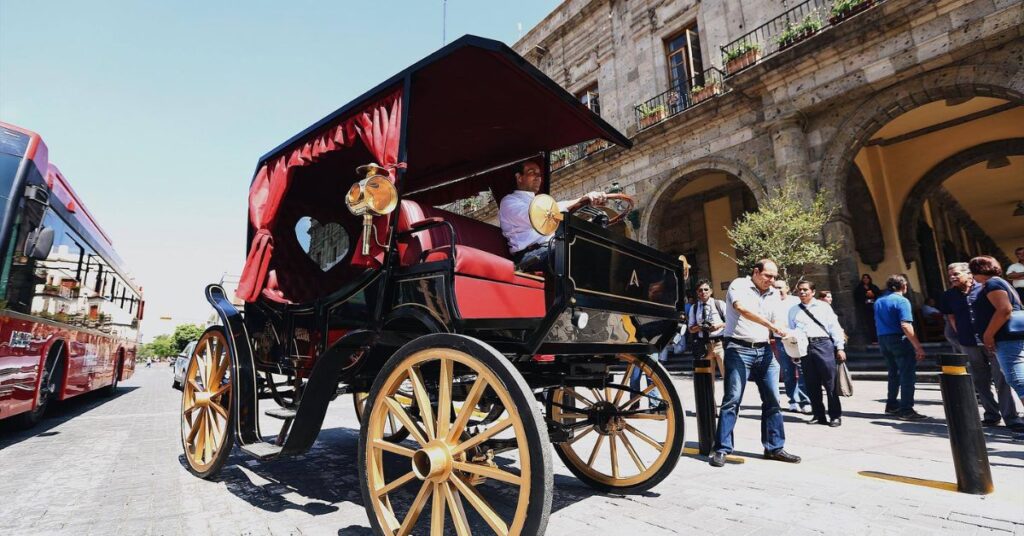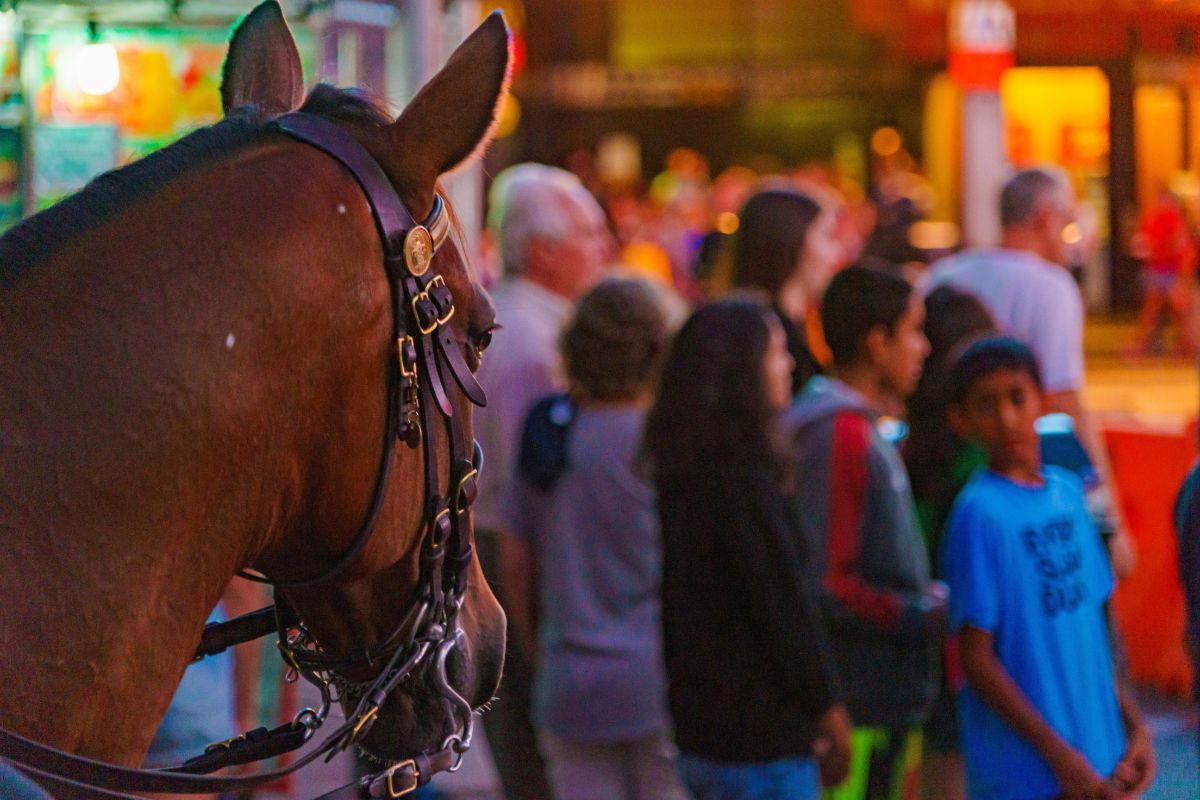By Nicole Rivard
On Aug. 10, following a days-long heat wave, NYC carriage horse Ryder collapsed on the street and laid on the hot asphalt for an hour as officers hosed him down to try to cool him off. The incident created another groundswell of opposition to an archaic industry that Friends of Animals has been railing against for decades.
Videos that went viral showed his owner yelling at Ryder and hitting his emaciated body while he was on the ground. Ryder was later diagnosed with Equine Protozoal Myeloencephalitis—a neurological condition caused by opossum droppings in food. The vet also determined the horse was malnourished and not strong enough to pull a carriage and that Ryder was 28-30 years old, not 13, which is what his owner told police. By law, NYC carriage horses cannot be younger than 5 or work past age 26.
At press time, Ryder was reportedly at a farm in upstate New York receiving treatment. But who can trust anything the carriage horse industry says?
Just weeks before Ryder’s collapse, 14-year-old carriage horse Billy was found dead in his stall around 4 a.m. July 20 from colic, a common, often treatable abdominal condition among horses.
And the month prior, carriage horse Freddy spooked inside Central Park and galloped the wrong way into oncoming traffic and crashed into two cars. He suffered a bloody gash but survived, just like another horse who crashed into the back of a BMW sedan in Midtown in September 2021.
All these incidents occurred despite former Mayor Bill de Blasio’s lame attempts to regulate the industry.
In 2019, New York City’s horse-drawn carriage hack line was relocated from just outside the park on Central Park South to three locations within the park. Carriage drivers are no longer allowed to tour through Times Square. However, they continue to travel alongside vehicular traffic on noisy, bustling streets between their stables and Central Park.
Under de Blasio’s administration, horses were also prohibited from being worked in 80-degree temperatures with an equine heat index exceeding 150. The equine heat index is calculated by taking the sum of the temperature and the relative humidity.

Still, horses are collapsing, spooking and getting into accidents in Manhattan. You cannot regulate atrocities. That’s why Friends of Animals has always only supported a full ban , which includes language to ensure the horses are released by their owners to proper sanctuaries.
A call for compassionate tourism
There is a glimmer of hope that the exploitive industry may finally be outlawed—over the summer Queens Democratic Councilman Robert Holden introduced Intro 573, legislation to replace horse-drawn carriages with electric ones by June 1, 2024. At press time it had 13 sponsors.
We sat down with FoA board member Elizabeth Forel to discuss the new bill, why it needs to be amended, and why she, like us, has remained committed to calling for a ban on the NYC carriage horse trade for decades.
FOA: What prompted you to become an advocate for NYC carriage horses?
Elizabeth Forel: I first saw the carriage horses on the street in the late 1980s and they remained in my heart—they looked so pathetic between the shafts of their carriages with no freedom of movement, dragging around uncaring tourists. I had to do something because what was happening to them was so wrong. To lay the foundation, I began to collect data from city agencies—regulations, number of horses, drivers, stables—and researching accidents. I tried to learn everything I could about horses. That is crucial for anyone wanting to get involved in a campaign. Know the subject and the players.
When did you start the Coalition to Ban Horse-Drawn Carriages? What keeps you inspired and not giving up when it comes to this issue?
On Jan. 2, 2006, a carriage horse named Spotty was killed in an accident on 9th Avenue and 50th St. on his way back to his stable. He spooked at something and bolted, wrapping his carriage over a car. The images in the media were gruesome. He was so gravely injured, he had to be euthanized on the spot. This hit me and many activists very hard, and I vowed to do something to put an end to this inhumane business, which resulted in the formation of the Coalition to Ban Horse-Drawn Carriages—a subcommittee of my organization, The Coalition for NYC Animals, founded in 1994. I decided that if I were going to put myself into this, it would be for a total ban—not more regulations. I had no idea how politically connected the carriage trade was and how enmeshed in the status quo and not rocking the boat most politicians were. Later I became aware that journalistic objectivity was something that escaped most of the media outlets in NYC.
I am tenacious and do not easily give up on something. I knew it would be a long and tough road. In 2016, we concluded that public demonstrations were not effective. But I have continued working behind the scenes.”
Can you talk about what you and Susan Wagner, president of Equine Advocates sanctuary, learned on your fact-finding mission to Guadalajara. Mexico in 2019, which transitioned to electric horseless carriages in 2017, the first city in the world to do so?
The most important thing we learned is that all stakeholders must participate and cooperate. I know it is difficult, but it is the only way. We met with all the players—the drivers, owners, engineers, government officials and activists. They told us how they worked together to make this happen, which is shown in interviews in our video on the website we created—Compassionate & Responsible Tourism (compassionatetourism.org). After having a contentious relationship as most activists do with carriage owners, somehow, they eventually all came to the table. There was mutual respect and a willingness to have a successful outcome. Things changed there because of collaboration and commitments to make something good happen.
What has been the feedback from the drivers in Mexico? How has it affected the living they make?
The drivers in Guadalajara told us how they love their electric horseless carriages. They make more money and don’t have to worry about costly vet care for their horses or losing business because of bad weather. And they no longer worry about being called animal abusers.
This is testimony in the video previously cited, by owner Pedro Aguilar, president of the Tourist Carriage Association in Guadalajara: “Cities evolve, cities change. And the people, as part of the city they live in, must also change and adapt. Traditions don’t die. They live on because it’s not just the horse. The tradition is going on the ride, the tour we give, how we treat people, and getting in a vehicle like this, which is simply a carriage without a horse.”
NYC drivers can no longer make the case that there is no business model for electric horseless carriages. While they don’t exist in the United States yet, they currently exist in 14 cities around the world and more are considering them. It’s also noteworthy that in the last few years, two major cities that had carriage horses —Montreal and Chicago— did not offer an alternative to the drivers and simply shut their businesses down.
What did Guadalajara do with its carriage horses?
A local activist helped to place the carriage horses in good homes and many of the owners are still in touch with them.
Do you have any concerns about the current language of the bill introduced by Councilman Robert Holden?
Yes. Apparently, his office did not include the carriage owners or the Transport Workers Union in conversations —something we learned was necessary for success. This could be a mistake that sinks the bill. Concentrating on the non-owners offering union pay rates has some merit, but disrespecting the owners by not including them is problematic. It is, after all, their business and they would be the ones paying the salary.
Also problematic is that the bill offers no plan for what will happen to the horses other than to have the owners sign a commitment not to send horses to slaughter, showing a lack of understanding of how this despicable process works. An owner might be very willing to sign such a commitment, since many sell their horses to Amish farmers. It is very possible the farmer could work the horse for a month or more and then bring the horse to auction. This clause is well meaning but naive.
Lastly, there was scant information about the necessary steps that apply to all cities offering electric horseless carriages. They are not purchased out of a catalog.
What are some things members of the public can do to help NYC’s carriage horses right now?
Encourage others not to take rides—like friends and relatives from out of town. NYC residents should contact their council members and ask them to support a transition to electric carriages or an outright ban if the owners continue to be unwilling to make some concessions.
Info Box
A timeline of past attempts to outlaw the carriage horse industry
There have been several attempts to introduce and pass legislation that would ban horse-drawn carriages—and one that would have introduced electric “old-timey” cars. There was even a clause to place the horses in sanctuaries. Here’s a look at why those failed in the past.
The first ever bill to ban horse-drawn carriages in NYC was introduced in 2007 by then Council Member Tony Avella. It was opposed by the Council Speaker at the time—Christine Quinn—and Mayor Bloomberg who said incorrectly that horses need a job, and they would all go to slaughter if there were a ban. This was false on two counts. First, if there had been a ban, it would be the owner who took the horse to slaughter—horses do not go on their own volition. And second—my research showed that between 60 and 70 horses were falling off the roles of the Depart of Health yearly with no accountability. So, the “slaughter issue” was already a possibility.
In 2011, Avella was elected to the NYS Senate and introduced a similar bill, which did not get enough support. Even if it had passed, it would have had to go back to the NYC Council for a vote because of the Home Rule law. That bill included a provision to place the horses in sanctuaries. This was an issue because the horses are privately owned.
In 2014 a bill to introduce 1920s-style electric cars also did not go anywhere. The data presented showing how much income the drivers would earn in a new business could not be verified since a similar business did not exist in the U.S. The drivers also have a habit of digging in their heels, not willing to make any changes.
In 2016, a bill was introduced that would have considerably reduced the number of horses, but not the drivers, which would mean the horses would work more. But the worst part was that the stables would be relocated to Central Park at city expense. The stable owners could sell their stables for their own benefit. A sweetheart deal. This riled up many good government groups who threatened lawsuits. Public parks legally belong to the people, not private business. If this had passed, it would have tied up the courts for years. The Transport Workers Union (TWU), which did not represent the carriage drivers, came out in defense of the pedicab drivers who would have been relegated to work near 85th Street. They threatened to sue the city. There was a big disagreement between the owners and the Teamsters, which represented the drivers at that time, and the bill died.

